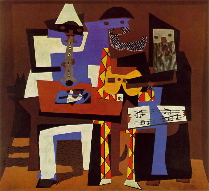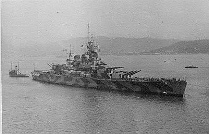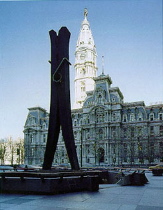Post by Rodger LaPelle

[Ed. Note — We invited LaPelle to share his list, previously published in Art Matters, with us. We’ve edited for length and clarity.]
One day, sitting in my gallery, I made this list of the reasons why people buy art.
1. Artist-Purchasers. First we must recognize that the artist, by purchasing materials and expending time to produce the work, is the first purchaser of the art. Picasso had 42,000 pieces of art left in his estate when he died — work he hadn’t sold. There was an estate tax on it and the French government took payment in art in lieu of cash. (image is Picasso’s “Three Musicians”)

2. Artist-Collectors. This art, then, can be traded to another artist (a like- kind, non-taxable event) for their work. A lot of collections are built this way. I traded a watercolor for an etching with a third year art student in 1961 in London. His name is David Hockney.
3. Home Decoration. People look at their walls and decide to decorate their living quarters with an eye to color arrangements or soothing or exciting subjects. They are buying art basically as an add-on piece of furniture. (image is painting commissioned for space above the couch)
4. Body Decoration. Art is bought to wear — painted ties, sculptured hats, jewelry.

5. Philanthropy. Helping an artist financially either as a young one starting out or an older one down on his luck. The artwork is selected to preserve the dignity of the artist/recipient. The main reason is not the art per-se but to aid a struggling art worker.
6. Federal Government as Purchaser. The government buys art (from staff artists) and actually makes money out of it. Take a look a the pretty scene of the White House on a twenty dollar bill. Sculpture is used for the coins and people are actually working each day for this ART. They want it. I include in this category postage stamps which are like money. (image is Phillipine postage stamp)
7. City Government. The City of Philadelphia commissions murals to fight graffiti and prevent urban decay.

8. Government Propaganda. Governments all over use art to agitate and propagandize (Agit-Prop), and depending on which way the wind blows the artist portrays an idea to bend the viewer’s mind in the desired direction to unify the masses to the policy of the moment.
9. U.S. Army as Purchaser. In the First World War, artists were commissioned to paint camouflage for ships and tanks. The Pennsylvania Academy held classes in camouflage at that time. A little paint could save expensive military assets. (image is World War II-era camouflage-painted battleship)
10. British Government. The British Railway in the 1970’s and 1980’s purchased art for the railway workers retirement fund and sold the art twenty years later for a good return to be paid to support retired workers in their old age. Art was allowed in retirement funds here in the U.S. until Congress forbade it in 1979. That could have been quite a stimulus to the art market.

11. Art for ET. The Federal government used art on the Voyager space mission to communicate with other intelligent life — to show what we look like to other creatures somewhere out there.
12. Commemoration. Some commission portraits of their family members, pets, houses, boats, all to to record their reality and to have a memento of endearment or achievement.
13. Gift-giving. The gift of art is tricky, like when Richard Nixon went to China and bestowed on them porcelain swans by Boehm of Trenton. Temple University gave Christine McGinnis’s owl engravings (150 of them) to the Japanese officials in Tokyo when the school established its campus there. The first art I collected was a “Silly Philly” cartoon original drawing when I was six years old done by “The Family’s” Bill Keene. Watching him do it got me interested in being an artist.
14. Art for Commerce. Art is used to sell products such as in the Absolut Vodka ads. And previously the DeBeers diamond ads used the paintings of Salvador Dali and others to get people to buy diamonds. (image is detail of “Corona Borealis” painting by Leona Wood for De Beers)

15. Art for Profit. Individuals will buy and sell art for the profit gained. Profit is not guaranteed however. I held a work for fifteen years years and sold it for ninety times what I paid for it — from $50 to $4,500. Luck helps and patience pays, but you have to play to win. This is the investment aspect of buying. You don’t even have to like the work.
16. Art for Status. Believe it or not people buy art for status and recognition in society. Enough said. I am a big shot because I own a big shot artist — Picasso, for example.
17. Art as Portable Wealth Transfer Device. Once, when Italians were hampered by currency exchange controls (meaning they could not leave the country with very much cash) what they did was buy small, expensive masterworks and sell them at auctions or to dealers, just to have spending money on their travels. It’s art as portable wealth transfer device.
18. Entertainment Value. People buy pictures or pay to see them for entertainment (comics, for example) — especially if the pictures move (the cinema).
19. Teaching Aid. Art is purchased and published for didactic purposes — to educate , instruct and edify. Art is a universal language and fills in where words fail. Teaching art is essential to teach perception to students.
20. Behavior Control and Spiritual Uplift. Religious use of art not only for guiding the illiterate but to capture the imagination generally on a spiritual level has been a long tradition, especially at the Vatican where focussing people on Heaven and Hell is meant to enforce a moral behavior through the visualizing reward and punishment.

21. Preservation. Some buy things that they do not necessarily want but that are valuable historic artifacts that should be preserved for posterity in museums.
22. Memorials. Art memorials honoring the dead, like Tom Hanks asking for money for a bronze sculpture to memorialize those who died in World War II.
23. Territoriality. Sculptures at the entrance gate of an estate, or Watts Towers in Los Angeles. The work says here I am, behold me. (image is detail from Simon Rodia’s Watts Towers)

24. Because they have to. Percent for art laws mandate new construction in cities to spend one percent of the budget for art in the building to give a more humane feel. Philadelphia was the first in the U.S. to have such a law. The Clothespin sculpture in Center City by Claes Oldenberg is a prime example. (see image above) Hitler in 1933 made art purchases for buildings at three percent of the total cost but that plan stopped abruptly in 1945.
25. Symbolic Identification. People will buy some art because they like the idea of the subject of the art and want it as part of their surroundings, such as a stock broker with a picture of a bull in his office.
26. Magic. Magical forces are believed the be affected by the judicial use of art. Particularly noteworthy is the use of the Voodoo doll and hex signs.

27. To Destroy It. Art is purchased, sometimes with bullets as payment, in order to destroy it.
28. To Eat it. Eating ceremonies are enhanced by art in the food — jello in the shape of a face, cast figures in the silverware, paintings on the plates etc. One can include several reasons together for a particular acquisition.
29. For Love. Finally, people collect for the LOVE of art. (image, Richard Indiana’s “Love” [sic. see comment below])









